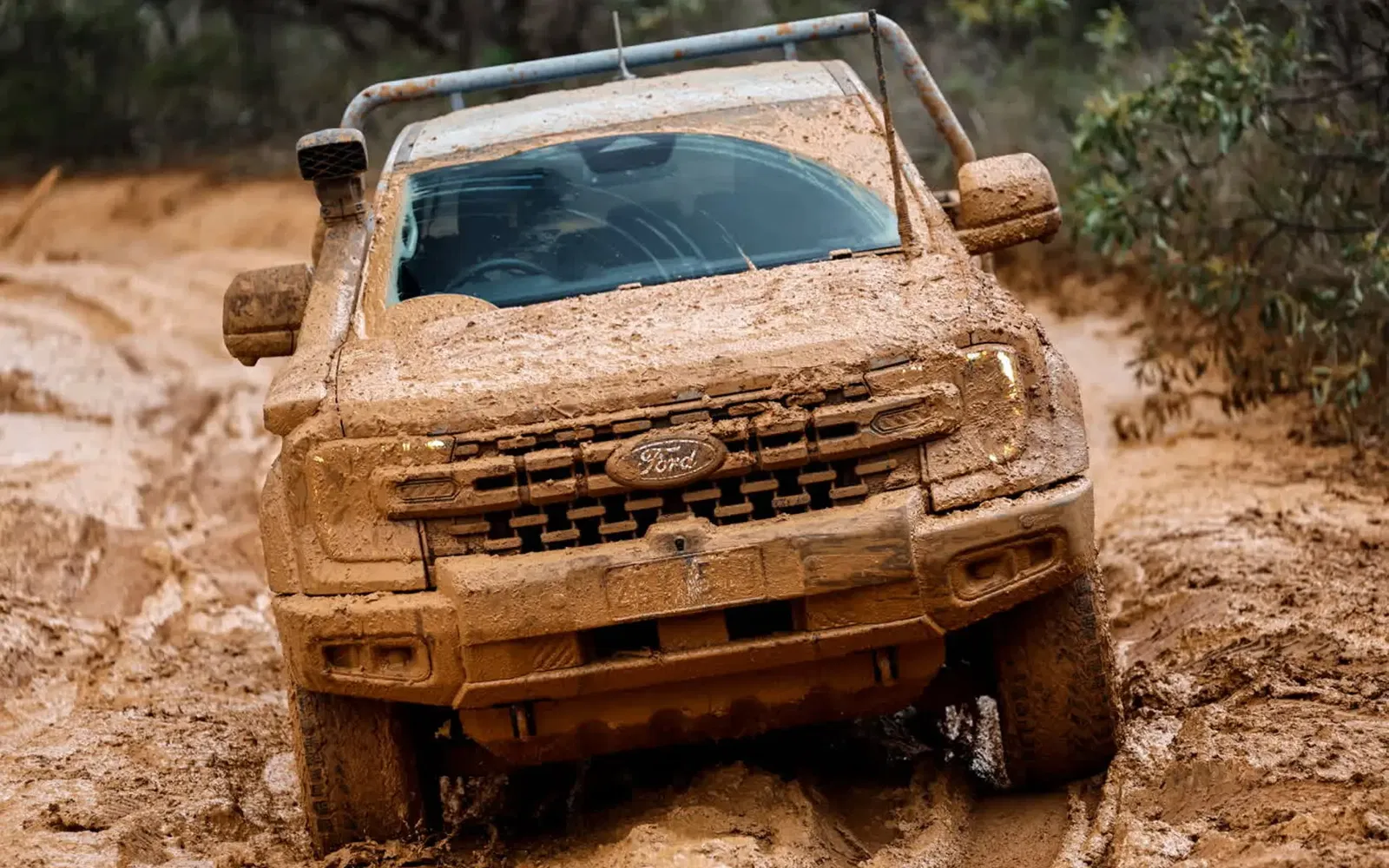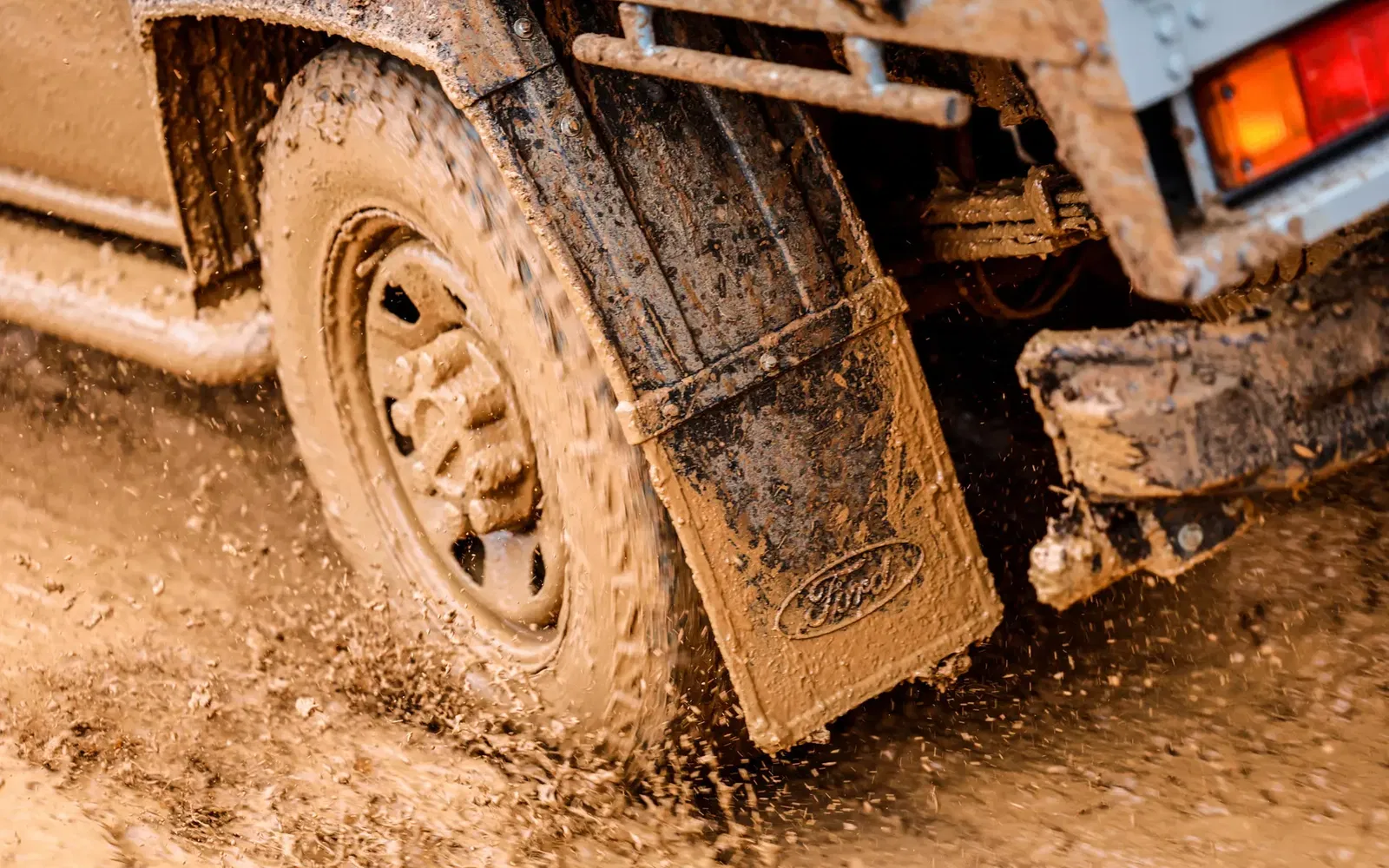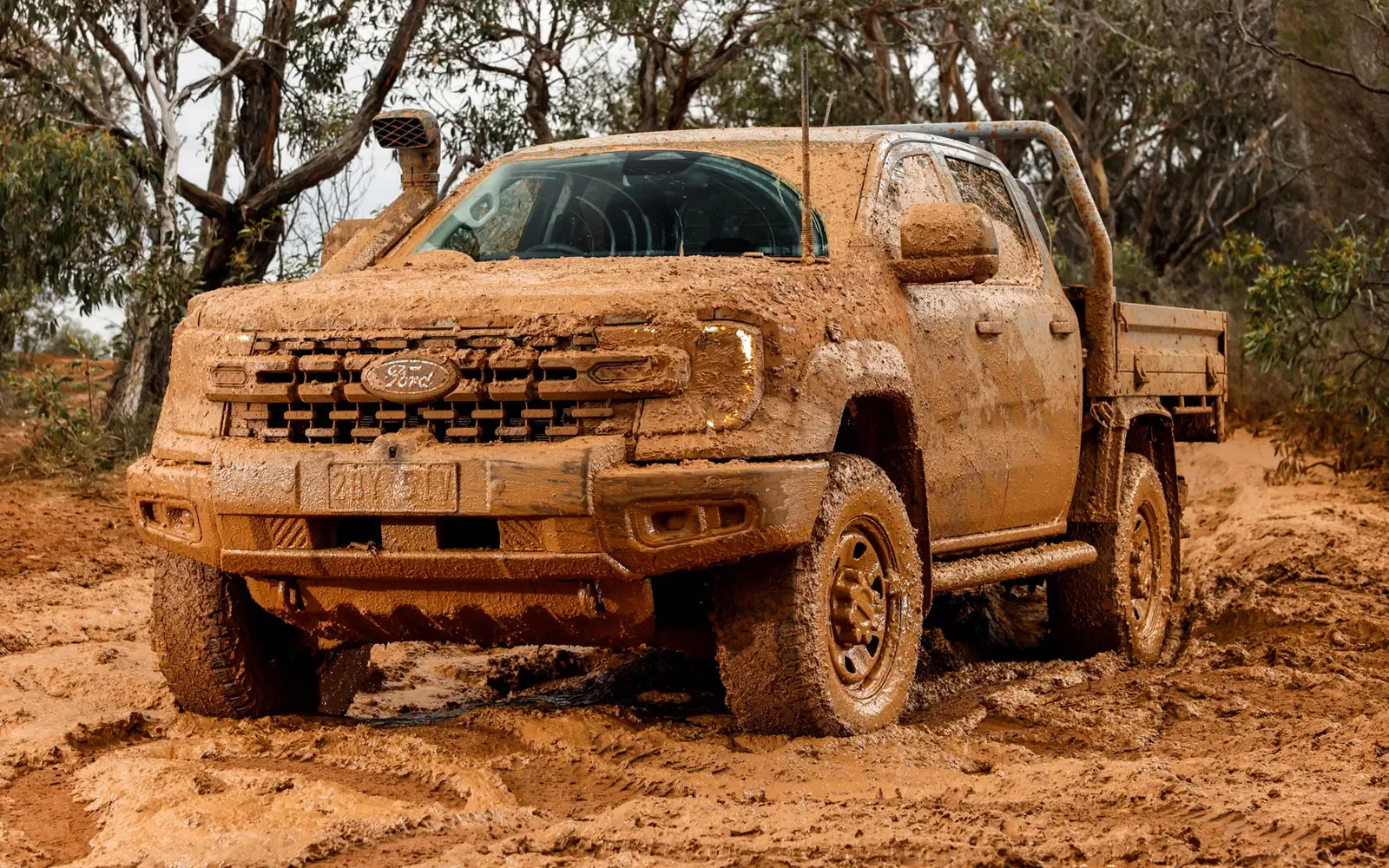Ford Australia has revealed details of an extreme durability trial developed specifically for the Ranger Super Duty, dubbed the “mud-pack test,” designed to replicate the harsh conditions experienced by off-roaders and mining professionals.
Conducted at Ford’s You Yangs Proving Ground in Victoria, the mud-pack test involved repeatedly driving a pre-production Ranger Super Duty through deep ruts, sticky clay, and bog holes over several days to accumulate and retain layers of mud.

The goal was to simulate the real-world build-up of performance-sapping debris, testing how components handled increased thermal loads, restricted airflow, and additional weight.

Ford says more than 600 kilograms of mud was packed onto the prototype vehicle by the end of the process.
Mud buildup can block airflow, trap heat, and damage components like fans and alternators.
“It can add significant weight, prevent airflow, and act as an insulator, causing components to heat up much quicker. It’s highly corrosive and can clog up fans and alternators, preventing them from running correctly,” said Rob Hugo, product excellence and human factors supervisor at Ford Australia.

The test track was specifically engineered to apply a range of conditions intended to stress the vehicle’s systems.
Once the mud was built up, the vehicle continued operating under the added weight, equating to that of a full-grown Brahman steer.

Ford describes the mud-pack test as a key part of its "Built Ford Tough" validation program, which is intended to push beyond what typical owners might encounter in the field.
The Ranger Super Duty is currently undergoing validation testing ahead of its eventual production launch, with specifications and final details yet to be confirmed.
The prototype featured in the mud-pack test is a pre-production model driven by professional testers under controlled conditions.
FAQ
What is the mud-pack test for the Ranger Super Duty?
The mud-pack test is a durability trial developed by Ford Australia to simulate extreme off-road conditions by packing the Ranger Super Duty with over 600kg of mud.
Why did Ford develop the mud-pack test?
Ford designed the test to validate how the Ranger Super Duty handles real-world mud buildup, which can obstruct airflow, increase component temperatures, and add significant weight.
Where was the mud-pack test conducted?
The test took place at Ford’s You Yangs Proving Ground in Victoria, Australia, on a purpose-built track designed for extreme terrain conditions.
How much mud did the Ranger Super Duty accumulate during testing?
The prototype accumulated more than 600 kilograms of packed mud over several days of repeated off-road driving.
Sign up to our newsletter
Be the first to know when we drop new car reviews.
.avif)









